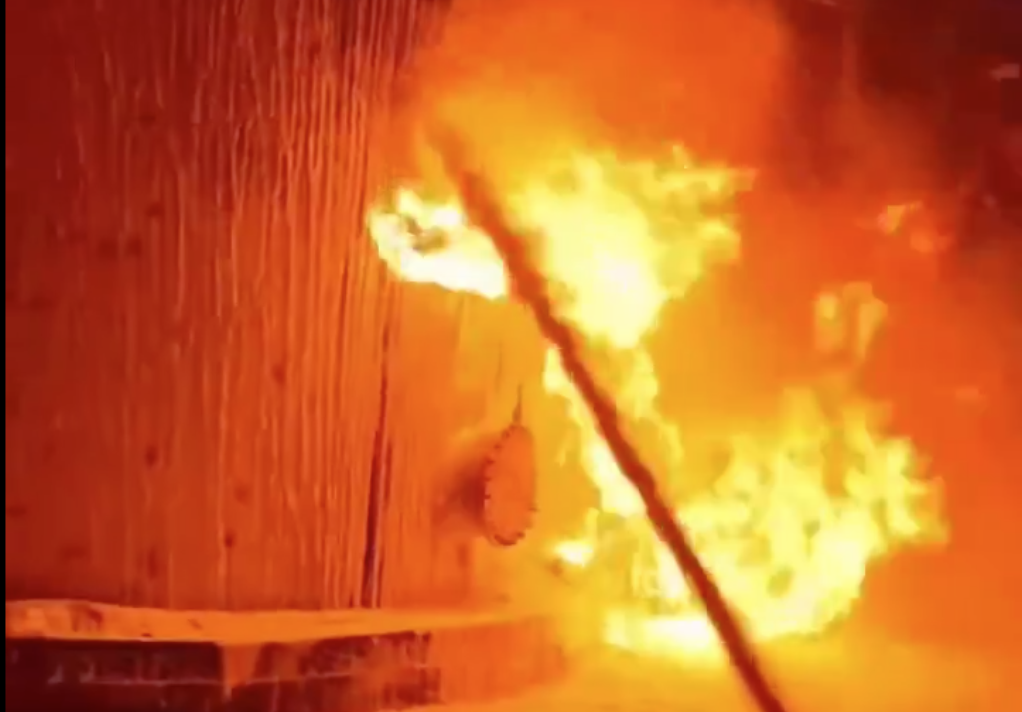Ukraine targeted a Russian fuel depot in occupied Luhansk Oblast, setting it ablaze in an effort to hinder the Russian military and weaken Russia’s economy, which heavily relies on oil exports. The attack was carried out by Ukrainian troops in cooperation with the intelligence service (HUR) and is part of a broader campaign against Russian oil assets that has been ongoing since March. The fires caused by these attacks can burn for days, causing significant damage and disruption. In some cases, such as the recent attack on the Marine Oil Terminal in occupied Crimea, the fires forced evacuations and lasted for four days. Despite the impressive display of burning refineries and depots, it is unlikely that these attacks will completely collapse Russia’s oil sector.
Russia’s dependence on oil and gas exports is highlighted as a vulnerability by Politico, as these exports contribute significantly to the country’s federal revenue. In 2023, fossil fuel profits accounted for almost one-third of Russia’s total federal revenue, and this reliance on oil and gas has increased over the years. This revenue plays a crucial role in funding Russia’s expensive war machine in Ukraine, making any threats to the oil sector a significant concern for the country. Saudi Arabia’s planned oil production hike is identified as a potential threat to Russia’s economy, as increased production could lead to a decrease in oil prices and impact Russia’s ability to fund its military operations.
The attacks on Russian oil assets by Ukraine are part of a broader strategy to target infrastructure that supports the Russian military in occupied territories as well as inside Russia itself. These attacks have increased in frequency throughout the year, with at least 33 assets being targeted, some of which are located deep inside Russian territory. The goal of these attacks is to disrupt the Russian military’s operations by hindering their access to fuel and to weaken Russia’s economy by targeting its oil exports. The fires caused by these attacks have the potential to burn for extended periods, causing damage and disruption to operations in the targeted areas.
The significance of Ukraine’s attacks on Russian oil assets is underscored by the potential impact on Russia’s war economy and overall economy. With a heavy reliance on oil and gas exports for revenue, any disruption to the oil sector poses a threat to Russia’s ability to fund its military operations in Ukraine and maintain its economy. The attacks have been carried out strategically, targeting key infrastructure such as refineries and depots, with the aim of causing maximum disruption and damage. It is clear that Ukraine sees weakening Russia’s economy and military capabilities as key objectives in its conflict with its neighbor.
The ongoing conflict between Ukraine and Russia, both on the battlefield and in the realm of economic warfare, is intensifying as Ukraine ramps up its attacks on Russian oil assets. The targeting of fuel depots, refineries, and oil infrastructure is a calculated move to disrupt the Russian military and weaken the country’s economy. These attacks have been ongoing since March and have increased in frequency, with Ukraine striking as deep as 1,500 kilometers into Russian territory. The fires caused by these attacks can burn for days, causing significant damage and disrupting operations. While the attacks may not lead to a collapse of Russia’s oil sector, they are certainly increasing the pressure on the country’s economy and military capabilities.
The impact of these attacks, combined with other factors such as Saudi Arabia’s planned oil production hike, highlight the vulnerabilities in Russia’s economy and its dependence on oil and gas exports. The threat of decreased oil prices and disruptions to the oil sector pose a significant risk to Russia’s ability to fund its military operations in Ukraine and maintain its war economy. Ukraine’s targeted attacks on Russian oil assets are not only a military strategy but also an economic one, designed to weaken Russia’s ability to sustain its aggression in Ukraine and potentially force a change in its behavior. The conflict between Ukraine and Russia is multifaceted, with both military and economic factors playing a crucial role in shaping the outcome of the ongoing conflict.


